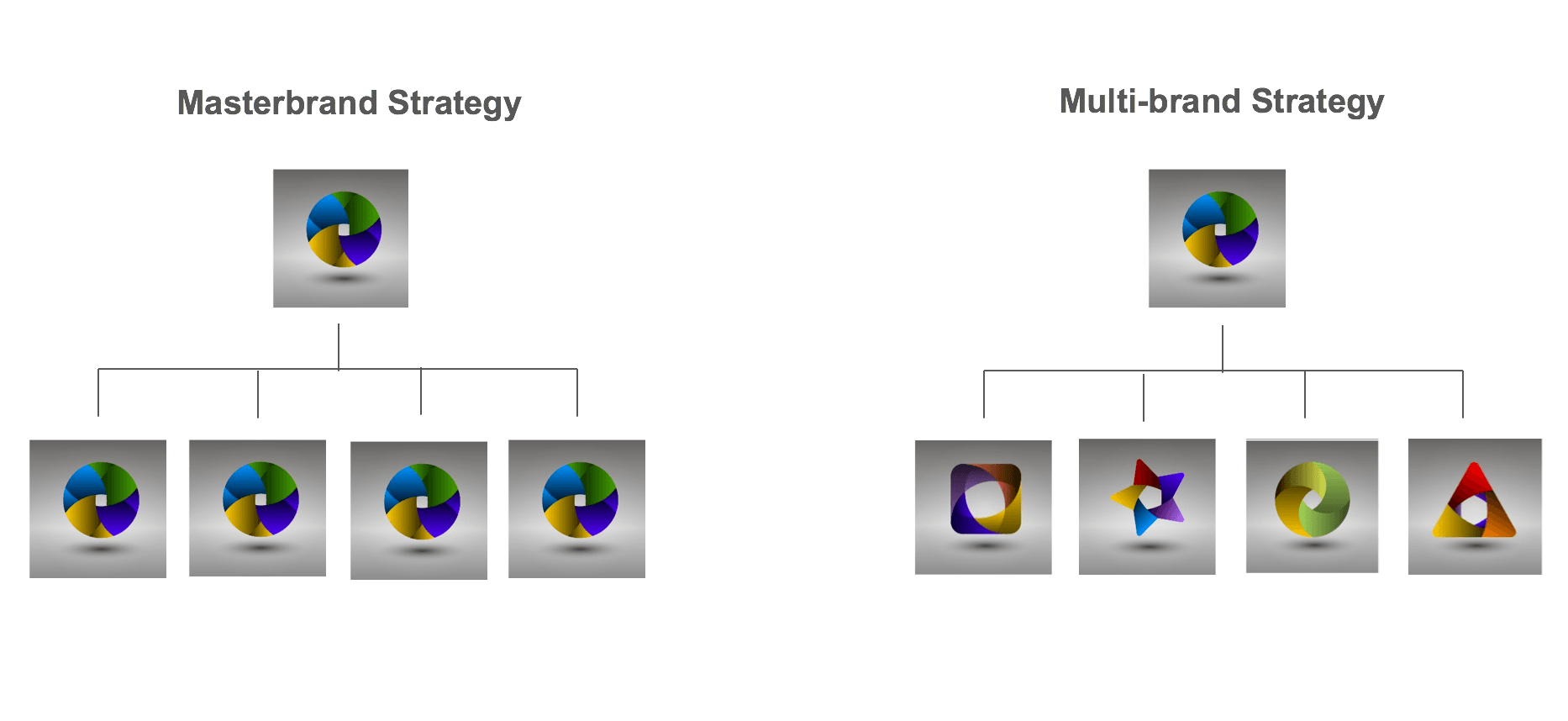Brand Architecture…Think Simple
Frank Lloyd Wright said, “Think Simple … reduce the whole of the parts into the simplest terms, getting back to first principles.”
This is great advice to follow in developing the most effective brand architecture as your company evolves and grows. An effective brand architecture is one that both reflects your current position and supports future growth, strategy and direction.
We all know that a well-developed architectural plan, if followed, ensures that a building will stand the test of time through shifting conditions. Similarly, an effective brand architecture strategy informs current and future critical decisions at crucial moments in a company’s life – mergers and acquisitions, brand extensions, marketing partnerships, new product development and entry into new markets.
At its highest level, brand architecture can be described as the visual presentation of the relationship between the company brand and its businesses, product lines and product brands. From a branded house to a house of brands, there are many brand architecture strategies and models to consider.
So, what should the brand architecture do?
Your brand architecture should define how your company communicates its offerings. Some basic criteria it should meet:
Allows for either a clear separation of, or clear relationship between, individual brands
Brings clarity to complex portfolios and helps customers to easily understand the range of your product and service offerings
Provides a consistent approach to branding and naming decisions
Defines a path for new brands, brand extensions and acquired brands
Brand architecture decisions generally fall within two core models – Masterbrand and Multi-brand — with a wide range of variations and options between the two.
With the Masterbrand model, the corporation and its individual companies and brands share the same name. Think Google and AT&T. The primary benefit of a Masterbrand strategy is it facilitates your ability to integrate operations, consolidate marketing spending and to cultivate a common culture. Building on a Masterbrand provides a level of efficiency, and newer company additions benefit from the reputation of the Masterbrand. And not to be taken lightly, a Masterbrand can simplify communications and messaging to both internal and external stakeholders.
Conversely, a Multi-brand strategy provides flexibility for corporations which have divisions or products with unique names, positions and identities in the market. Consumer packaged goods companies like Procter & Gamble and SC Johnson are considered classic examples of the Multi-brand strategy in action. Individual brands within a larger corporate structure does allow each business line to appeal to a focused target audience and to be more flexible and nimble in messaging. At the same time, managing multiple brands can become complex, with fragmented messaging and less economies of scale.
There is no shortage of best practice examples to support each of the two very different strategies. And the driving factors of customers, clarity and cost will determine the best solution for your company and business. However, in terms of measurable efficiencies, integrated communications and the ability to focus efforts behind a singular brand idea, I believe the Masterbrand model best implements the wisdom imparted by Wright’s advice to “Think Simple.”


